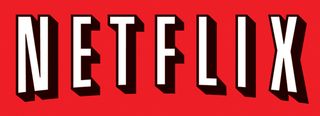By my count, there are more than 1,000 vendors in the online video industry. Some of them are quite large and get a lot of publicity in the media but most of them are smaller, don't have as much visibility in the market and are not as well known. Starting with this post, every few months I plan to highlight some of the smaller companies that I personally think are doing a really good job in the market. Here are the companies I have selected for this month:
 Wowza Media: For nearly six years now, Wowza Media has been in the market offering streaming server software that does just about everything. Customers I speak to love that Wowza's server has streaming support for all of Apple's iDevices, Microsoft Silverlight and Apple QuickTime formats, Android and BlackBerry support as well as working with IPTV and set-top boxes. David and Charlie at Wowza have taken something that's complex in the market and made it much simpler, kept the server affordable and from what customers tell me, provide fanatical support. Selling server software isn't very sexy, which is why you don't hear too much about Wowza outside of the IT community, but the company really has done a good job over the past six years of making a name for themselves with a very good product and has a lot of happy customers to prove it.
Wowza Media: For nearly six years now, Wowza Media has been in the market offering streaming server software that does just about everything. Customers I speak to love that Wowza's server has streaming support for all of Apple's iDevices, Microsoft Silverlight and Apple QuickTime formats, Android and BlackBerry support as well as working with IPTV and set-top boxes. David and Charlie at Wowza have taken something that's complex in the market and made it much simpler, kept the server affordable and from what customers tell me, provide fanatical support. Selling server software isn't very sexy, which is why you don't hear too much about Wowza outside of the IT community, but the company really has done a good job over the past six years of making a name for themselves with a very good product and has a lot of happy customers to prove it.
 Influxis: In just a few short years, Influxis quickly became known as the go to company in the industry for content providers and publishers looking for custom Flash Media Server hosting options. Many developers needing to run custom FMS applications or doing something unique quickly gravitated to the dedicated hosting options provided by Influxis and their expertise in delivering Flash content. Thousands of customers later, the company has now branched out into providing a lot of the custom development work around players and apps for live events, multi-user collaboration needs, P2P and DRM solutions and is now also specializing in prepping video for mobile applications.
Influxis: In just a few short years, Influxis quickly became known as the go to company in the industry for content providers and publishers looking for custom Flash Media Server hosting options. Many developers needing to run custom FMS applications or doing something unique quickly gravitated to the dedicated hosting options provided by Influxis and their expertise in delivering Flash content. Thousands of customers later, the company has now branched out into providing a lot of the custom development work around players and apps for live events, multi-user collaboration needs, P2P and DRM solutions and is now also specializing in prepping video for mobile applications.
 PeerApp: While certainly not the only company providing media caching solutions in the market for telcos and network operators, PeerApp's name keeps coming up with customers as having one of the best solutions in the market. And while not widely known, PeerApp has a long list of customers using their technology to offer their own media caching solutions in the market, essentially white-labeling PeerApp's technology. As the media caching market has started to consolidate with Alcatel-Lucent buying Velocix and Juniper buying Ankeena, I suspect PeerApp is at the top of a very short list of companies that will be acquired next. Over time, the media caching market will be dominated by the big boys like Cisco, Juniper, Alcatel-Lucent, Bluecoat, Huawei etc. and it's only a matter of time before a dominant player in the space takes out PeerApp for their technology and customers.
PeerApp: While certainly not the only company providing media caching solutions in the market for telcos and network operators, PeerApp's name keeps coming up with customers as having one of the best solutions in the market. And while not widely known, PeerApp has a long list of customers using their technology to offer their own media caching solutions in the market, essentially white-labeling PeerApp's technology. As the media caching market has started to consolidate with Alcatel-Lucent buying Velocix and Juniper buying Ankeena, I suspect PeerApp is at the top of a very short list of companies that will be acquired next. Over time, the media caching market will be dominated by the big boys like Cisco, Juniper, Alcatel-Lucent, Bluecoat, Huawei etc. and it's only a matter of time before a dominant player in the space takes out PeerApp for their technology and customers.
 Accordent: Truly a leader in the enterprise video space, Accordent has been providing enterprise class video platforms for more than a decade. In that time they have amassed more than 1,500 customers and have more than 150 of the Fortune 500 using their solution. Combine that with the fact the company has raised about $10M only $4M in funding over the past decade all while still continuing to grow their business and that speaks for itself. I constantly get feedback from a lot of enterprise customers about the video solutions they have deployed inside their network and to this day, I have yet to hear from a single customer who hasn't been happy with Accordent's technology. And if there was some kind of contest for being the nicest people to deal with, Mike and Jeremy at Accordent would be at the top of that list. That may sound silly, but it's one of the reasons why Accordent's customers are so happy and loyal.
Accordent: Truly a leader in the enterprise video space, Accordent has been providing enterprise class video platforms for more than a decade. In that time they have amassed more than 1,500 customers and have more than 150 of the Fortune 500 using their solution. Combine that with the fact the company has raised about $10M only $4M in funding over the past decade all while still continuing to grow their business and that speaks for itself. I constantly get feedback from a lot of enterprise customers about the video solutions they have deployed inside their network and to this day, I have yet to hear from a single customer who hasn't been happy with Accordent's technology. And if there was some kind of contest for being the nicest people to deal with, Mike and Jeremy at Accordent would be at the top of that list. That may sound silly, but it's one of the reasons why Accordent's customers are so happy and loyal.
 Cotendo: When Cotendo launched in the market just over two years ago, the industry was already crowded with far too many CDNs primarily focused on delivering video. Knowing this, Cotendo made the smart decision to offer products, like app acceleration, that are more complex, have higher margins and what the industry defines as "value add services". While many of the other CDNs in the industry were trying to change their product portfolio to provide value add services and diversify their revenue, Cotendo was already blazing a trail signing up customers like Facebook and Answers.com. Two years later, the company has more than 150 customers, a major deal with AT&T and is quickly ramping revenue and getting a very good reputation in the industry. Adding to their creditability is the fact that that the leader in this space, Akamai, has filed a patent infringement suit against Cotendo, which clearly goes to show that the company is doing something right.
Cotendo: When Cotendo launched in the market just over two years ago, the industry was already crowded with far too many CDNs primarily focused on delivering video. Knowing this, Cotendo made the smart decision to offer products, like app acceleration, that are more complex, have higher margins and what the industry defines as "value add services". While many of the other CDNs in the industry were trying to change their product portfolio to provide value add services and diversify their revenue, Cotendo was already blazing a trail signing up customers like Facebook and Answers.com. Two years later, the company has more than 150 customers, a major deal with AT&T and is quickly ramping revenue and getting a very good reputation in the industry. Adding to their creditability is the fact that that the leader in this space, Akamai, has filed a patent infringement suit against Cotendo, which clearly goes to show that the company is doing something right.
If you think there a company in the industry that I should consider as a "hot company to watch", please contact me and let me know why. I'm always interested in suggestions.
Disclaimer: At the time of writing this post, none of the companies highlighted are sponsors of my blog.
 Last week I listed Accordent Technologies as one of the hot companies to watch in this space and today, Polycom announced it would acquire Accordent Technologies for approximately $50M in cash. It's a nice payout for Accordent which had $9M in revenue for 2010 and over more than a decade of operation had only raised $4M in funding. For Polycom to pay 5x revenue in today's market is a clear sign of just how strategic Accordent's technology will be to the company and also an indication of how well Accordent was doing in the industry. Ploycom's CEO Andy Miller wrote a letter to customers letting them know why the Accordent deal is so strategic to the company which you can read here.
Last week I listed Accordent Technologies as one of the hot companies to watch in this space and today, Polycom announced it would acquire Accordent Technologies for approximately $50M in cash. It's a nice payout for Accordent which had $9M in revenue for 2010 and over more than a decade of operation had only raised $4M in funding. For Polycom to pay 5x revenue in today's market is a clear sign of just how strategic Accordent's technology will be to the company and also an indication of how well Accordent was doing in the industry. Ploycom's CEO Andy Miller wrote a letter to customers letting them know why the Accordent deal is so strategic to the company which you can read here.




